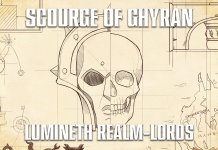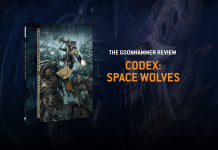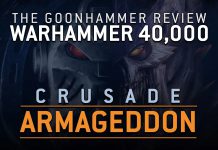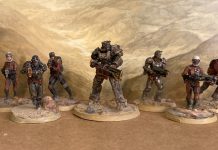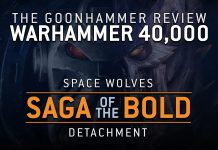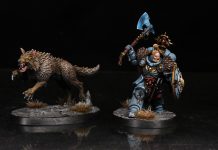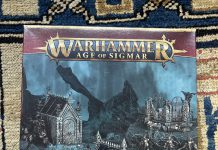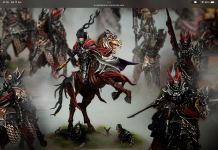I’d like to take a moment up top to appreciate the Spires as a triumph of game design.
They are a faction that exists in the intersection of many of the most tricky mechanical concepts to balance. They’re the healing faction, as well as the fast faction, as well as the alpha strike faction, as well as the ranged faction. If you’ve played wargames before any one of those might make you wince – you might have flashbacks to fighting whatever flavour of Elves was your local nightmare. For the Spires to operate in that space while being razor balanced both internally and externally is not easy and I’ve never seen it pulled off anywhere nearly as well as Para Bellum have done here.
This is a fantastic faction, to play and to play against. You can play them as an ultra-complex high skill ceiling army or as a brute force monster mash rampage. It’s a faction with enormous depth and plenty of opportunities to blow up your entire army.
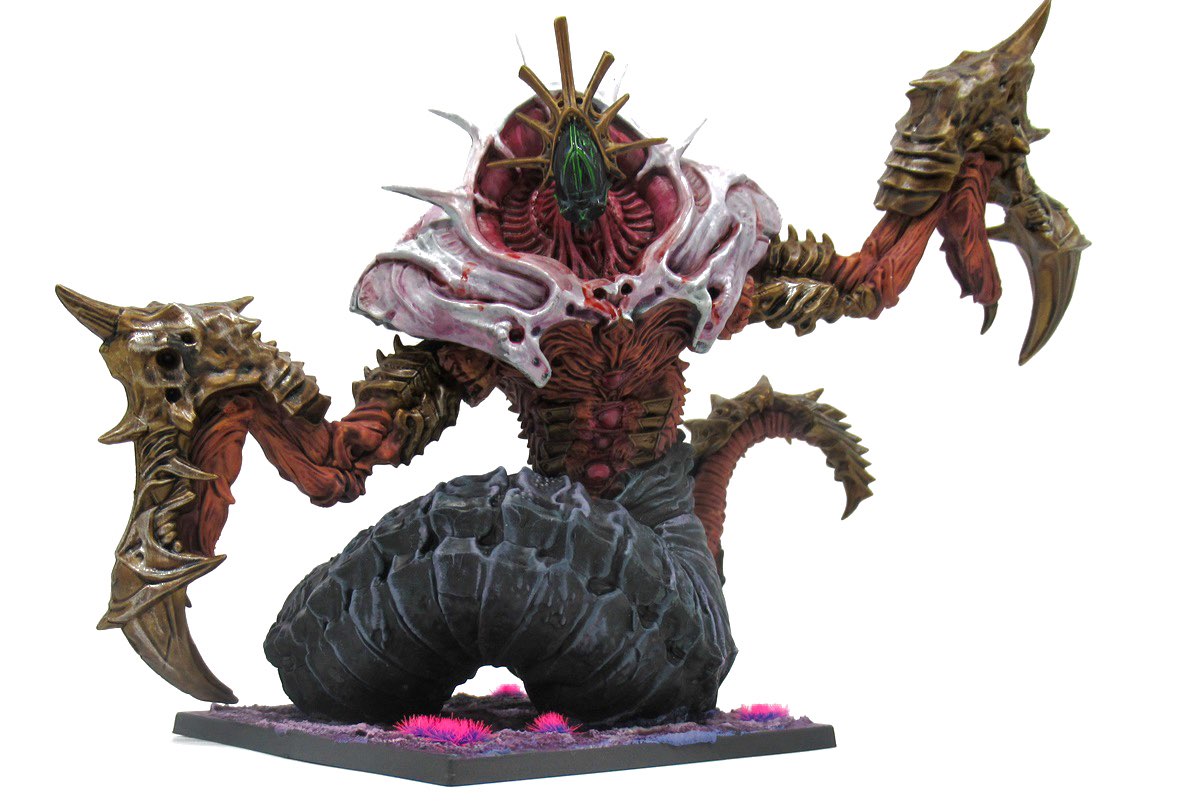
Strengths:
- Extremely good support characters
- Powerful sources of healing
- Excellent ranged game
- Fast
Weaknesses:
- Fragile
- Inefficient profiles; units rely on buffs to reach their full potential
- No defense against magic
- Tend to blow themselves up
Also check out my companion article on how to negotiate the complexities of the Biomancy and Pheromancy system!
Army Abilities
You have a choice of four now, linked to your Warlord. The most permissive, flexible and easily usable is the Directorate, while the most bluntly powerful is the Underspire. The Sovereign Lineage is your choice if you’re going heavy on some specific units or you’re new to the game and want to fill out your points cap with as few models as possible.
The Sovereign Lineage
Like many of the optional upgrade army rules, this one’s kind of bad. It had a very clear use case in previous versions but now it only really affects the following units:
– Avatara: Clash 3 Avatara are certainly okay but they’re not really a build around
– Bound Clones: But the only character who really wants to roll around in a big unit of Bound Clones is the Biomancer, who can’t benefit from this army rule.
– Vanguard Clones: Potentially shockingly effective, but very fragile.
And that’s kind of it. Everything else in the High Clone or Lineage Highborn’s warband is Clash 3, ranged, or better in a different subfaction. If you’re in love with Avatara or Vanguard Clones (which is legit, they’re great sculpts and cool units) then this is for you, otherwise go Directorate.
The Directorate

Any non-Underspires list is, then, probably a Directorate list. That is entirely fine because the Directorate’s ability of choosing one unit a round to gain Burnout is amazing.
The Clash bonus from Burnout is neat but not the prize here; the prize is getting to add +2 to any unit’s march characteristic on demand. This can help you snap objective zones or make long distance charges and can be combined with Unstable Enhancement for a comical +4 movement speed and +2 Clash. Whatever unit you do this to will probably decay straight to hell after you combine those, but putting Deadly Blades/Unstable Enhancement/Burnout on a unit of Vanguard Clones and sending them to murder someone 14 inches away is very powerful. Also key on things like the Siegebreaker Behemoth which has a low volume of powerful attacks coming in at a slow speed 6.
Decay (3) means on average 1 wound per stand on the affected unit. This is high variance though, so just brace yourself for it to be way worse than you expected.
The Underspire
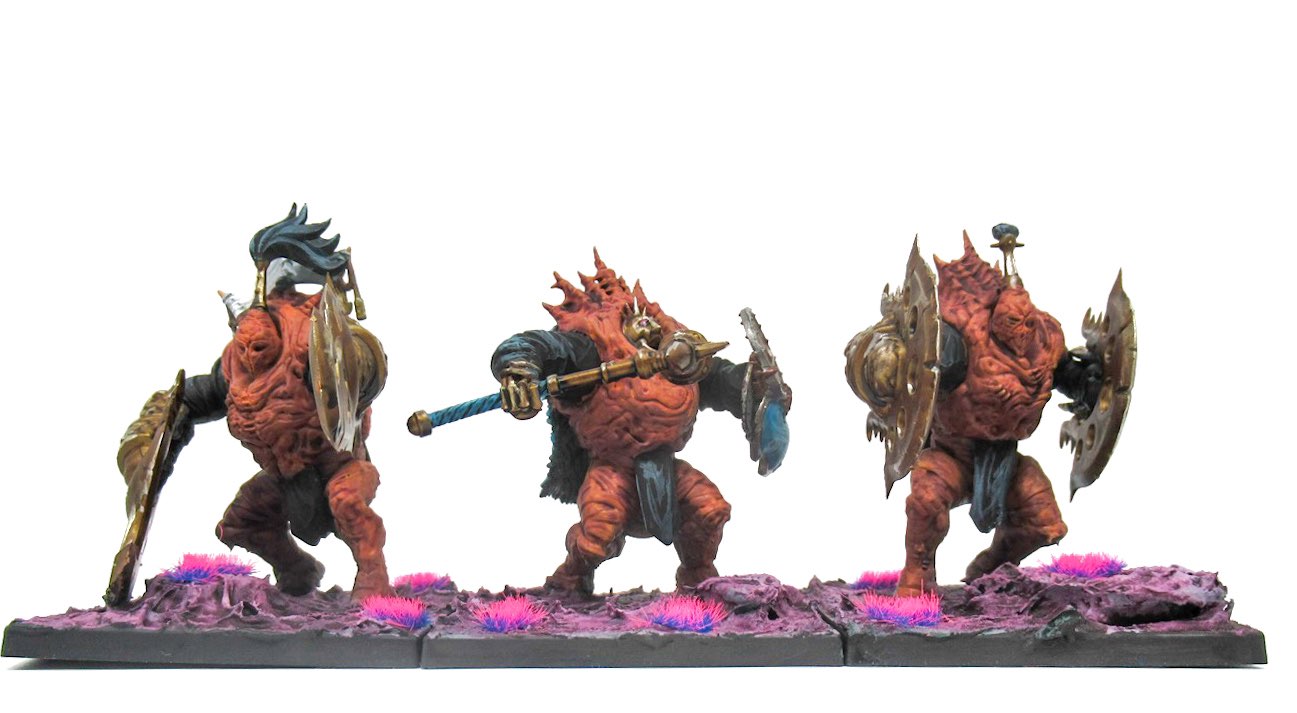
When you think about Regeneration (4) on your entire army then it’s natural to fixate on it. It’s natural to combine that with other sources of healing in pursuit of the dream of the unkillable wall of meat. It’s so obviously, devastatingly good that even though I’m going to spend this section explaining why it’s not actually that good it’s still very good.
The problem, then, with Regeneration (4) is the problem that it does not help if you’re Broken. Regeneration is a draw event which means the window for it comes and goes before a Broken unit has the chance to unbreak itself. This means that if your opponent can halve your unit size in a single attack then the ability is worthless.
So just use larger unit sizes, the logic immediately goes – but how big does a unit of Onslaught Drones have to be to survive getting charge+clashed by a big unit of Ashen Dawn Knights or a Mountain Giant? Defense 2 does not go very far at all when you’re being hit by a serious combat unit and you can often expect to lose 4 stands at a time against your enemy’s heavy hitters. This means that to ensure you don’t get broken in combat against an endgame unit you need a minimum unit size of around 7-10 stands plus a support character. In that situation you’re likely recovering 1.5-3 stands from a variety of healing effects, which maybe outpaces the incoming damage but isn’t guaranteed to. You might be able to win that fight, but if your unit size drops low enough that any of those attacks break you then the whole thing falls apart. Moreover, one big unit with Regeneration 4 is less total regeneration than many small units, but those smaller units have higher chances of Breaking and not regenerating at all.
But still, if you can get on the right side of the healing curve you can become literally unkillable, an endless tarpit of fresh bodies. More practically, it means you can shrug off ranged harassment units that will try and plink a few wounds off your Stryx. But to get the most out of this you need to avoid becoming Broken as much as possible – and this means preventing your opponent from concentrating force by any means necessary.
Characters
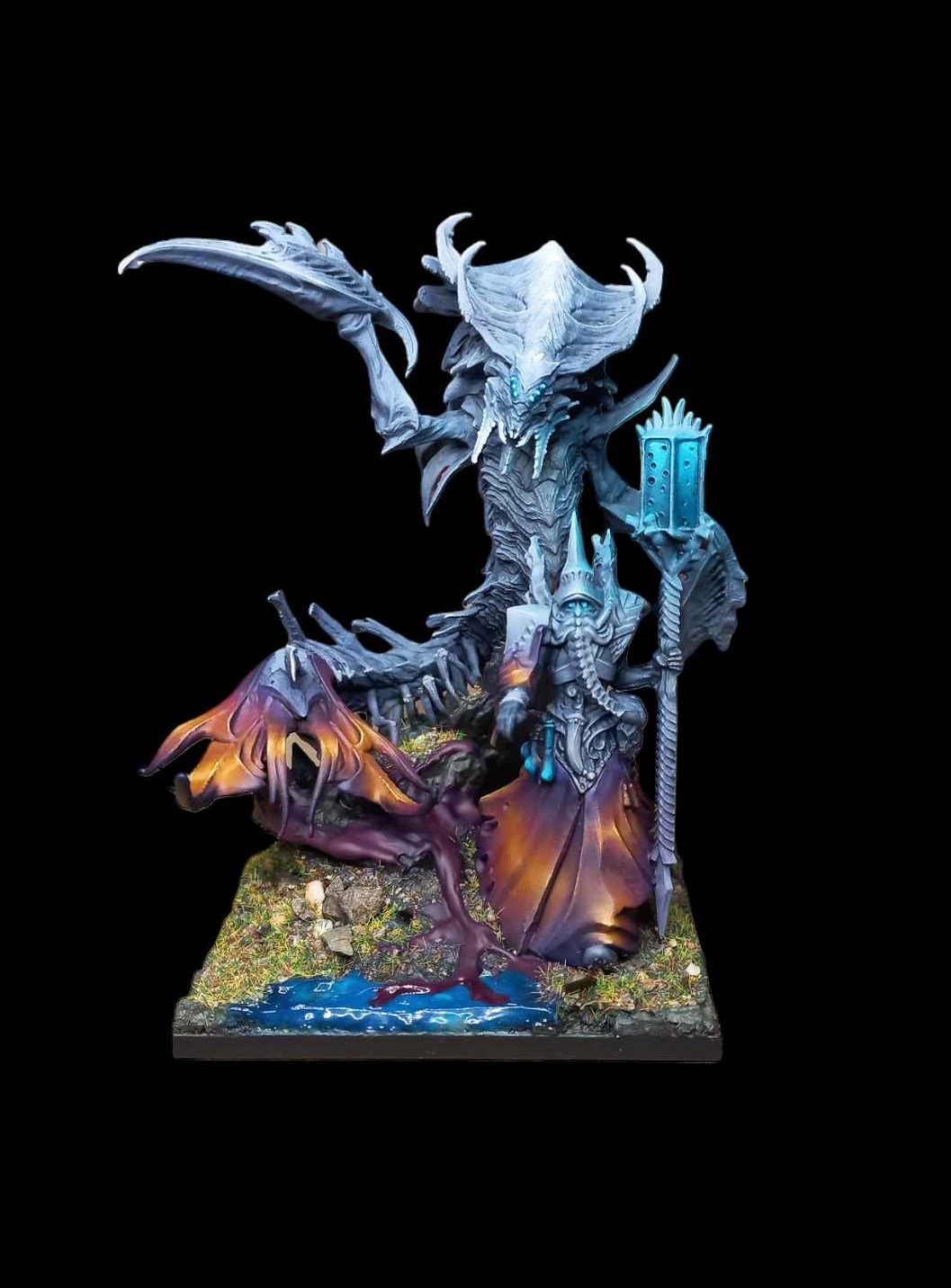
The Spires is cursed with excellent characters. And this is a curse – it’s so easy to spend points on them, so easy to justify spending points on them, so easy to see how their synergies overlap and empower each other and before you know it you’ve spent over 500 points on characters and upgrades and your actual army is looking really thin, especially if you’ve also spent a lot on ranged units.
When building lists think a lot about your support budget, and remind yourselves that character upgrades are competing for that against your ranged units. You need boots on the ground, and lots of them, in order to not have your lines instantly crumple when impacted by giants, werewolves and fire laser wizards.
Above anything else, though, keep your eyes on Cascading Degradation. It’s the best mutation in the entire army and a big part of Spires list design is deciding who’s going to carry it.
Lineage Highborn

The Lineage Highborn is a solid, all round combat character with a good statline – that is weirdly difficult to directly improve. There’s no way to add more attacks, more armour, more Cleave – all the mutations she has access to are support abilities that give more to her unit than to herself. That means she opens at peak performance and every so often will fight some kitted up character assassin and find herself at an unexpected disadvantage. For this reason if you find yourself with ten points to spare, Disorienting Blows won’t do you wrong.
But for practical purposes, the Highborn is kind of dead. Cause of death: an AP-2 Deadly Shot arrow in the back from her Prideborne sister. The Prideborne’s warband configuration is so much better than the Highborne’s that it makes the Highborn kind of a dead end piece; her only selling points are Pheromantic Override and that she gatekeeps the excellent Siegebreaker Behemoth.
As a Legacies of the Arc target there is only one recommended configuration – the old Ranged Highborn has been replaced with the Lineage Prideborne:
– Command Pheromones, Pheromantic Override, Cascading Degeneration
This is the pure unit commander version. Her attached unit of Incarnate Sentinels will be Resolve 5, Aura of Death 2, and be able to make a 1/game out of sequence March or Clash. With the new character chain activation rules, you can have the Highborn activate, Pheromantic Override her unit 7′ forwards, and immediately chain into a charge-clash for a terrifying 15′ threat range. This is generally the recommended configuration- you can use Venom rather than Command Pheromones for a little extra damage if you’d like, but I operate in an environment with a lot of Terror so the extra resolve is at a premium for me.
Lineage Prideborne
The Prideborne in my opinion should be viewed entirely through the lens of Mainstay Centaur Avatara. That’s good. That is extremely, very good. 500 points gets you a unit of Centaurs, a unit of Leonines with no further commitments; getting those two units used to mean a commitment of over eight hundred points in a Lineage warband.
Not only that, the Prideborne comes with an excellent little internal synergy where things her Leonines shoot become vulnerable to followup charges. This means that for the minimum possible points outlay you get a self-supporting cavalry element that slots in perfectly to any force.
High Clone Executor

The High Clone Executor is the most adaptable of the Spires characters. She can be built as a gun monster, pouring out an unending barrage of ranged firepower, the front line leader of a deadly Clones squad, a force multiplier for a swarm of Drones, or as a disposable suicide bomber embedded in a placeholder. She’ll often be a stiff competitor for the Warlord position because she can lead Directorate armies and Coordinated Assault is really good.
She gets two Tactics out of three, but all three are really good. The main question you’ll face in choosing which one to forego is if Bastion is relevant – if it conflicts with your Regeneration or you’re going to get it from a unit attachment then you can freely take the other two.
A special note goes to Biomass Abundance here – I’ll spare you the experiment, it’s not worth it.
Biomancer

The Biomancer is one of the best characters in the game. Fully tricked out in ideal conditions she can provide a maximum of 10 points of healing every turn. Even at the baseline she can wipe away the effect of softening arrow fire before the lines meet and be a reliable source of powerful buffs after that. She’s so good and all of her upgrades are so good it’s easy to straight up spend 200 points on her.
She’s been a huge beneficiary of recent changes to how Duels work – in particular, declining a duel no longer turns off her healing, making a frontline Biomancer a far stronger piece. At the same time Proximity Sensors gives a rear area Biomancer far more reach without accepting danger at all. I’m strongly in favour of putting her in a bulky combat unit of Incarnate Sentinels or Bound Clones to get the most out of Biotic Renewal, but you really can’t go wrong here.
There are two key configurations. In Incarnates you’re taking Avatar Projection and Fleshcarver; it’s a reasonably priced package that can put back an entire Incarnate stand every round. On foot you’ll often want Master Biomancer and Cascading Degradation (if you’re not using it elsewhere) or Degenerative Aura.
Pheromancer
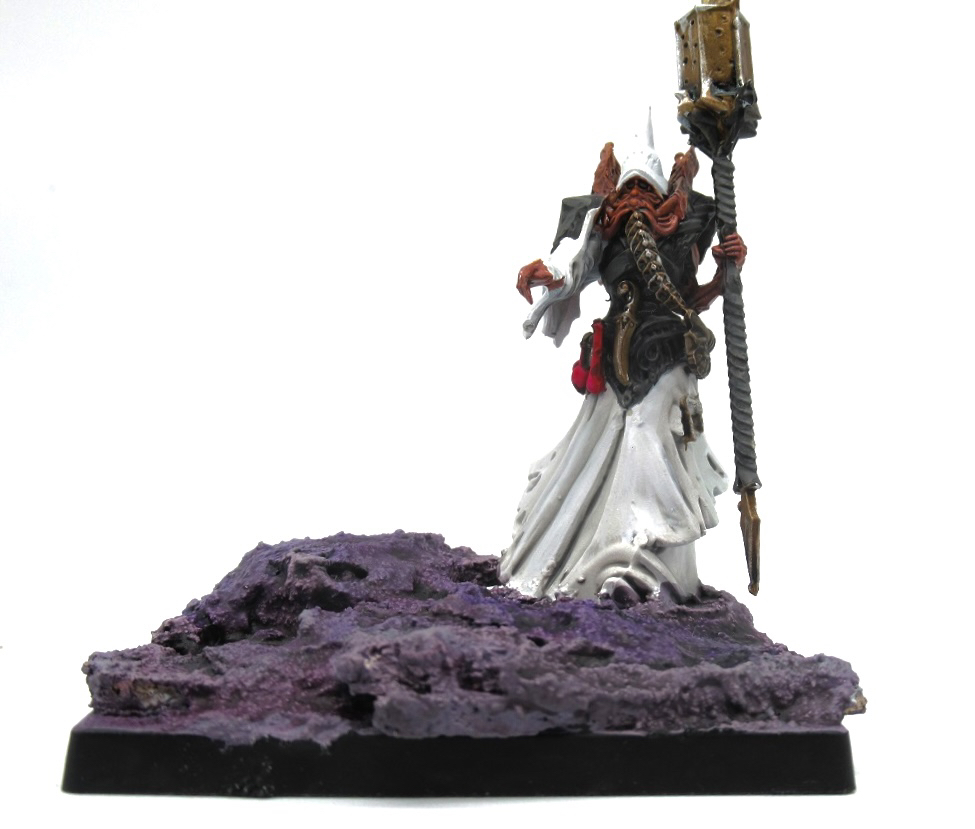
I think the rivalry between Biomancers and Pheromancers is one of the most fascinating and clever bits of game design I’ve ever seen. In terms of raw output the Pheromancers actually do better than their Biomancer rivals – Putting two units in Accelerated Hibernation for 8 points of healing and giving them +1 resolve each weighs favorably to 4 points of healing and using Harvest Essence to give the Biomancer’s unit +1 defense. On the offensive, Inspiring a unit and having it clash twice is much more dangerous than +1 clash and deadly blades. In terms of raw output the Pheromancer gets it done.
The catch is that the Pheromancer is an absolute pain in the ass to utilize. She’s rigid, inflexible and doesn’t play nice with others. Using her threatens to mess up your entire battleplan. If you want to use Pheromancers I believe you need to go all in on Pheromancers to get their peak effect. So the Biomancer is the flexibility piece, the Pheromancer is the power piece.
For a full discussion of Pheromancy and its unique requirements and possibilities, check out my article on the topic here
So that’s the difference; if you can ensure everything follows your rigid battleplan perfectly then you’ll get higher performance out of the Pheromancers. If you just want an adaptive, useful healer who slots into a list and brings a wide variety of utility effects you’re probably better off with a Biomancer.
Mimetic Assassin
So the good news is that all her rules work as advertised now.
The Mimetic Assassin is an extremely focused piece: She is a way to inflict the ‘Refused Duel’ debuff penalty on any enemy regiment with a character she is engaged with, and adds 5 hits to a clash action every round otherwise. Once in a blue moon she’ll activate into a Broken regiment and finally get to perform her function, but when that’s not occurring she needs to be evaluated in terms of the previous two effects. If that’s worth 90 points to you depends on:
- Do your opponents regularly field frontline characters who can be repeatedly challenged in this way?
- Are you planning on bringing a large infantry unit?
- Do you have somewhere else to put the character the Assassin is displacing?
The most common pairings are things like an Infiltrator Variant High Clone bringing an assassin to lead a large Vanguard Clone unit, or an Avatar Projection Biomancer/Pheromancer using the Assassin to command Bound Clones/Onslaught Drones. I think the Onslaught Drones are probably the best fit for the Assassin overall because none of the Pheromancer’s abilities rely on them directly leading a unit.
If you’re going in this direction you often want your Assassin to also have Adaptive Evolution (for Resolve 4) and Cascading Degradation (for an Aura of Death that your opponent won’t ever be able to scalpel out).
UNITS

Avatara
Entirely okay and serviceable units that move to genuine contenders when made Superior Creations. They’re just a Good Numbers unit, they do a little bit of everything, they can be made to scale into large bricks but you’re just as fine keeping them as a minimum sized all purpose unit. If not benefiting from Superior Creations they’re distinctly average for their price, which means you’re likely taking them as mainstay slot fillers. In that role, they’ll hold objectives against most things their price and not embarrass themselves.
Centaur Avatara
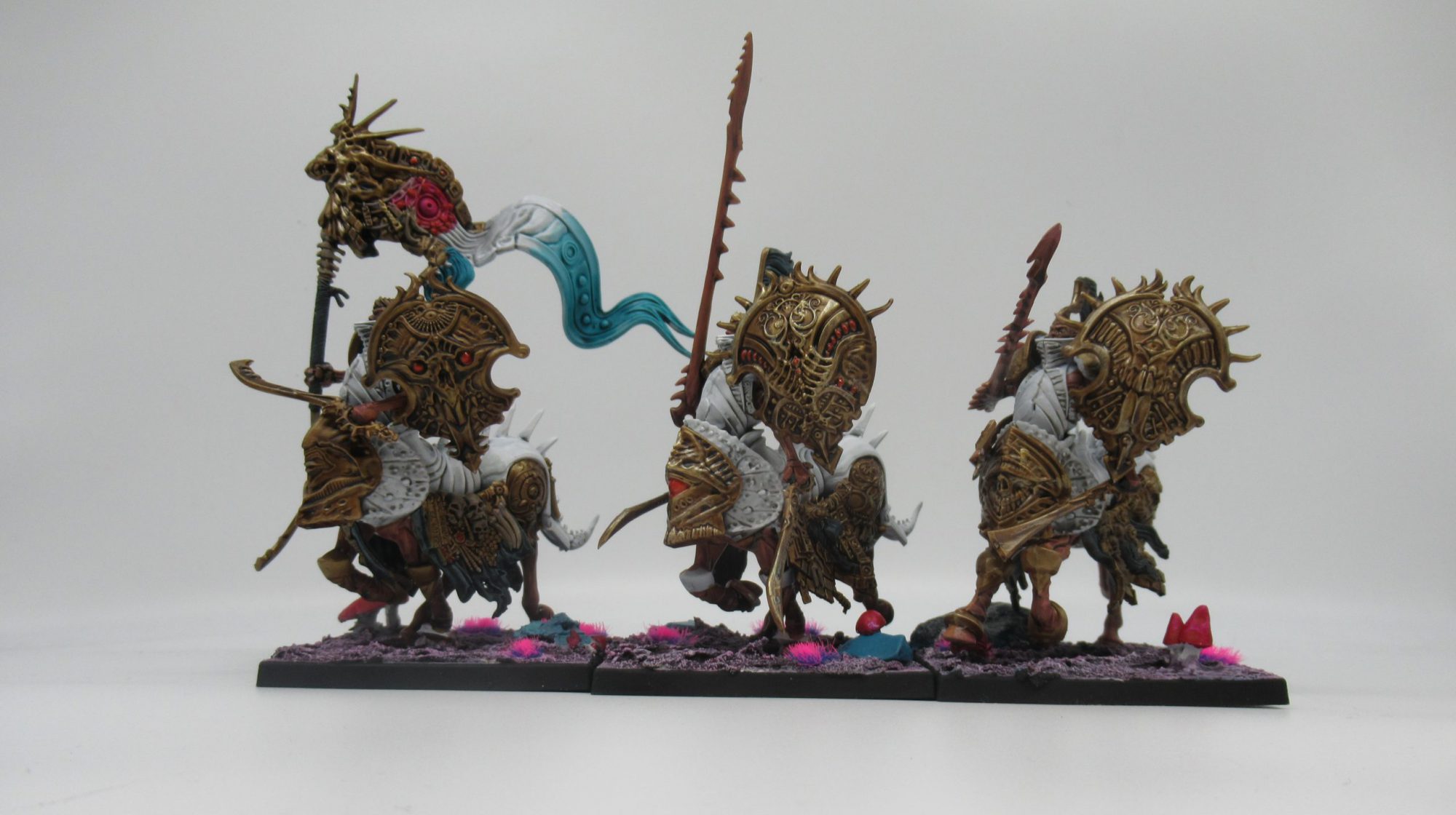
These are the definition of a Pile Of Numbers. They’re fantastic units, great stats across the board for an extremely reasonable price, the best sculpts in the game, and their great curse of being locked behind tax Avatara units has finally been broken. They’re Speed 8. They can be Speed 10 with Burnout. They can crack armour on the charge, throw a huge pile of attacks in melee to clear chaff, and their faction’s healers aren’t arbitrarily barred from healing them. Shock cavalry has a hard time in Conquest but these have the tools to overcome all of those weaknesses. You could easily run a unit of 6 and feel great about it.
Leonine Avatara
They’re Range 14′ archers, which inherently is kind of a suck place to be – even baseline Speed 5 infantry stand a realistic threat of march-charging you on a flat plane – and they come in warbands stuffed with Size 2+ units that they can’t easily shoot over. The upside is that with the Prideborn it’s very easy to add them to any army configuration without going out of your way and they represent either a significant pressure threat to pull a forward element out of position, or a force multiplier behind a large drone anvil shooting into close combat. They’re a support element so do not risk overextending them to get the shot, but there’s no reason not to take a unit in any list where you’re otherwise lacking armour piercing technology.
A maneuver you might find yourself in frequent use of is the Parthian Shot. You can fairly reliably Withdraw at Resolve 4, no-LOS volley with Fluid Formation, and then leave an unengaged unit potentially debuffed by the Lineage Prideborne’s Hunter-Killer teams. Particularly scary in tandem with a unit of Centaurs ready to finish the job.
Incarnate Sentinels

Watch out for that Resolve 3. Incarnates are fantastic but that’ll really get you.
There’s two configurations for these; carrying a Biomancer or carrying a Highborn – I would always prefer these as character escorts than independent operators given their price and how much they benefit from the force multiplication. The Biomancer version is straightforwards – maybe push the unit size to 4 just to shore up the resolve bonus a bit and bring a huge regenerating block of damage to dominate the lategame. The Highborn version frequently comes with the full commander package to make the scariest unit in the game – Resolve 5, Aura of Death 4, unbelievable damage output – but the hidden cost of this is in not putting Cascading Degradation somewhere else. It can often be overkill here due to the Incarnate ability to delete most things they hit.
Siegebreaker Behemoth
Speaking of deleting anything they hit. The Siegebreaker is an extremely good monster, both on its own and in concert with the rest of the Spires roster. Unfortunately it has moved into the unbelievably cursed position previously occupied by the Centaur Avatara: A restricted slot in the Lineage Highborn’s warband. If you take a Highborn you’ll take a unit of Avatara as a tax, a unit of Incarnates to put the Highborn in – and now you’re staring down the barrel of taking another unit of Avatara to get the Siegebreaker on the board. The Siegebreaker is good enough that it’s worth doing despite that but taking one under those circumstances means that 50% of your army’s points and possibly your Warlord choice are accounted for almost immediately which really limits the kind of builds you can splash it into.
Meanwhile the Centaur Avatara are the same points, extremely good, and Mainstay for the Prideborne. Like I said, the Siegebreaker is a great piece, it’s just a huge commitment to be able to take it at all.
Pteraphons
An extremely complex multi-role unit. There’s a lot to recommend these – if and only if you give them your full attention. At the end of the day they’re about as durable as Vanguard Clone Infiltrators.
Normally I’m down on multi-role unit but this unit gets there off the back of its unique mobility. These can blast in from the table edge and shoot an enemy 30′ away, boost over a tarpit slugfest and then reform and rear charge in the next movement. They can prey on backfield wizard and archer units, disassemble big phalanx formations or snipe backfield objectives. There’s enough utility here to find value, which is great, because their sculpts are going to be amazing. I haven’t seen them, but I feel it in my bones.
Do watch out for Fly, though. It’s a much, much less good rule than you might think at first. Notably, it doesn’t let you see over forests, help you against water or dangerous terrain, and it doesn’t even inure you against Hindering terrain taking away your impact attacks. It’s nice to have, might save you a few inches here or there, or let you outmaneuver a phalanx, but keep in mind the rule is extremely narrow: It lets you March over other regiments and impassible terrain, and that is it.
Force Grown Drones
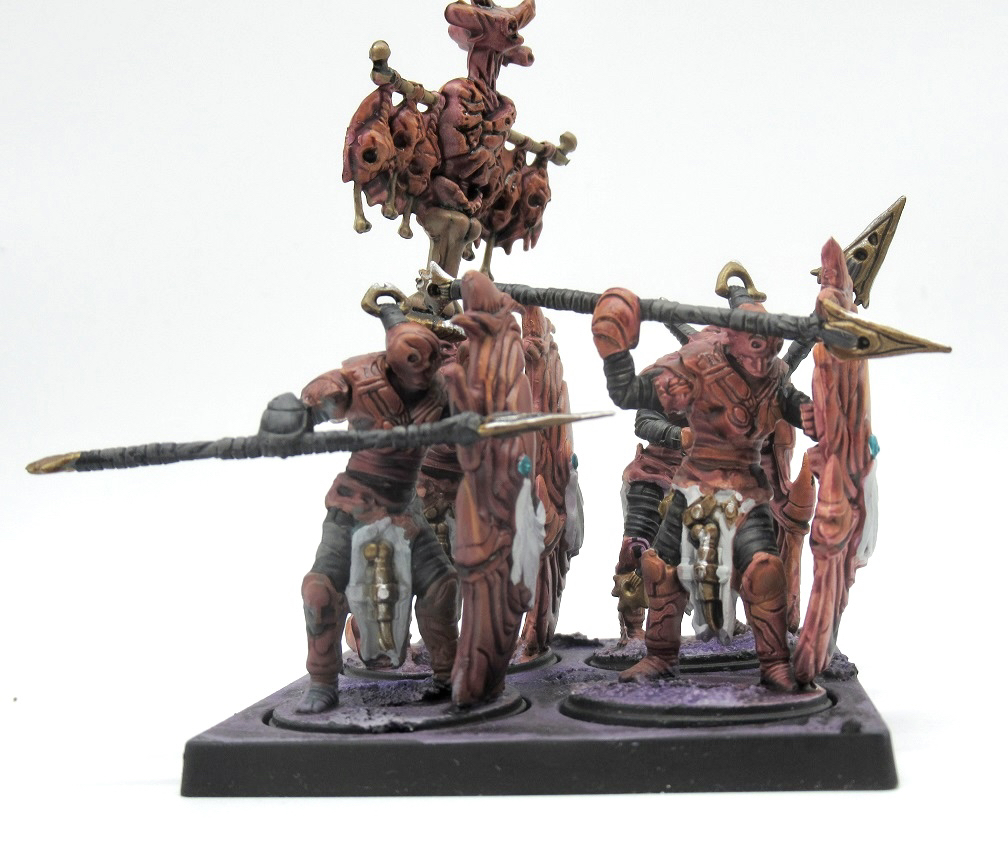
A statline comprised entirely out of 1’s, only three attacks, losing decisively to other factions light infantry, the humble Force Grown Drone is nevertheless a core part of Spires armies. Commonly they’ll be a mainstay tax, there to eat a charge, but the other way to deploy them is what I’ve taken to calling the Meatwall.
The Meatwall is some terrible number of Drones, something like 12 stands, with an embedded character with Aura of Death. This unwieldly nightmare formation trundles up to its opponent, march-charges in, and then deals 16-24 autohits every turn as they struggle to push their way through the endless swarm. Unit size bonuses and Purposefully Mindless keep them at effective Resolve 5 for a long time, minimizing the damage that they’re taking, and the Underspires regenerates 4 of the bastards every turn in addition to any other healing you might have along the way. Their actual attack is not relevant, all offense comes entirely from the Aura of Death.
This formation is best run by a Pheromancer or High Clone Executor. The High Clone is a little more up-front durable and being able to triple march can stuff these into an incredibly awkward location, but the Pheromancer can do the incredibly nasty trick of using Induce Lethargy to add effective Cleave 1 on those Aura of Death hits. If you don’t have a Pheromancer warlord for Regeneration, the Biomancer can make the entire block a scoring unit which can be a key part of your gameplan.

A quick disclaimer on the Catabolic Node: It’s probably not worth it on minimum sized units. It’s quite likely to wipe out one or more of your own stands when it goes off, which reduces the number of attacks that the Drones then make. On larger units where Resolve isn’t a factor it’s got more legs but it’s quite hard for it to be cost effective. But on the other hand I once had one do eight wounds to a unit of Blessed Ashen Dawn so the style points cannot be underestimated.
Bound Clones

The statline alone is not inviting. These middling footsloggers have nothing going for them and are more expensive than their equivalent line troopers in other factions. But more than anything else in the Spires, the Bound Clones are paying for the sins of the Biomancer.
A big unit of 6-8 with an embedded Biomancer is a table-warping threat. Firstly, it can be frighteningly durable – with Bastion and Harvest Essence, a combo that is easy to trigger with a single card draw – they can be Defense 4 with Shields. Added to that a constant healing of 1d6+2 every time they activate the unit can become a huge gear check – if you can’t crack it outright then any damage put towards the unit is wasted. This is the more elite, high armour version of the Force Grown Drone Meatwall.
You’ll also commonly wind up with small no-frills pods of Clones to fill out Mainstay slots and hold objectives. Expect nothing from them and you won’t be disappointed.
Vanguard Clones

I’ve increasingly come around on Vanguard Clones. They alone amongst Spires infantry can be trusted to Get Shit Done – they’re fast, dangerous, scoring units that don’t require a restricted slot to function in. More than anything, though, their use case depends on your formation – they’re something to slot in based on your need to contest multiple objectives or to add an independent asset if you’ve put too many points into a big unit that’ll be busy elsewhere. They also take well to the full buff suite, where Bastion, Clash 3 and Evasion 2 can come together into a threatening package of stats. They’re not a core part of the army but they bring a unique kind of value.
Marksman Clones

Reliable, effective ranged firepower with long enough range to be able to park themselves on an objective and still contribute. They’re less raw output than Vanguard Clone Infiltrators but they’re more reliable and better able to support a frontline unit. The main thing to keep in mind is that these are second rank archers and they should never, ever be in front of your combat lines. You do not under any circumstances need to risk these getting ahead of your main force even if there’s a juicy shot waiting. This is a ten turn game and these guys will do their best work if they’re firing until the end.
A larger unit makes a fantastic target for a Biomancer’s Grant Virulence, especially in early turns before the biomancer is needed elsewhere. If you’ve got a Pheromancer in the area they can also be prompted to double-shoot if you’ve got a clear line on your target.
Vanguard Clone Infiltrators

Of all the pieces in the Spires, maybe leave this one at home until your local community has a few games under their belt. They’re not unstoppable but they’re very, very good, especially in a way that newer players will have a hard time dealing with. In terms of sheer volume of shots and sheer swinginess of their effects they can make or break the game with a few volleys.
The big thing to watch out for is impact attacks or aura of death. Either puts you at risk of getting move-charged and inflicting huge out of sequence damage that these fragile, short range pieces can’t easily take. But if you can keep that glass jaw up, especially against slower infantry, then they’ll cut their opposition to ribbons. Keep in mind that you can have them retreat and still shoot – Fluid Formation grants 360 line of sight, and with a High Clone Executor they’re very likely to pass the resolve check, giving a nasty surprise to a unit that move-charged them.
Also, try to keep these alive all game long. They deploy as Light units so you might be tempted to think of them as expendible – they’re not. They’re your damage dealers, and if keeping them alive means not shooting with them for 2 turns while they maneuver away from threats you’re still coming out ahead.
Brute Drones

Good all-rounders with solid numbers, you’ll never feel bad about having these. Great with the Underspires, extremely resistant to morale damage, and Flurry makes them very consistent at outputting damage. They’re priced with the Underspires’ Regeneration 4 in mind, though, so they’re not particularly tempting outside of that subfaction.
Desolation Drones
These aren’t bad profiles but they’re cursed to be ‘not bad’ when surrounded by best-in-show profiles of Marksman Clones, Vanguard Clone Infiltrators, Leonine Avatara and – especially painfully – the Desolation Beast which does everything they do and better.
Abomination

It’s big, it’s Heavy, but it is not a linebreaker combat piece. What you’re paying for is speed. Specifically, the speed to march-march out of reserves and put 3 stands worth of scoring potential onto almost any objective on the board. In this role it’s phenomenal, and it’s so cheap it’s never to be underestimated. It is entirely possible to run 3-4 of these and have it be good.
Abominations are fragile, though. Think of them as comparable to those three-wound stand regiments you see sometimes. Most heavy units coming on at the same time they are will destroy them easily. If you need to use them in a fighting role try to take advantage of that speed to slip past heavier units and get unto backfield objective holders or support archers. Being Heavy they can hope to wipe an Objective Stand in a single charge if they get lucky with their impact attacks.
Desolation Beast
This is a very scary unit. It’s been toned down multiple times but it still represents a terrifying close range threat. Its huge size lets it stand behind an engaged combat block and turn the fight definitively.
The optimal use sequence for it though is to start the round with a target in range, volley, and then charge. That adds the 8 aura of death attacks to the volley attack – and then adds Terrifying lethal demise hits to finish the job as revenge for the counterswing. It’s a devil of a unit to kill for close combat units. It’ll die wastefully to any sort of ranged firepower so do not present it where it can be easily shot.
Onslaught Drones

Onslaught Drones are cheap, dangerous and they scale very well. The main block on using them will often come down to your willingness to build and paint huge swarms of Onslaught Drones. With Pheromancer support to back up their native Linebreaker then they can cut through heavily armoured infantry and with a big enough unit size and Regeneration they can sustain through healing. Their biggest weakness is that they’ll continuously try to bait you into blowing up your own unit with Burnout, so be very judicious when you pull the trigger on that.
Stryx

These are incredible, absolute joys to work with. They don’t need the Menagerie to be viable – in fact, if you’re taking a Pheromancer who isn’t your warlord, it’s almost certainly to add Stryx to your army. They’re the perfect little bastards who can just shit up your opponents deployment zones, they’ll slaughter factions who rely on lots of early game archers. They can fly over big blocks or just hang out being annoying, and when they die they’ll still extract their pound of flesh with Lethal Demise. They’re the perfect harassment troops and taking two-three minimum sized units is wonderful.
A Biomancer Warlord can make these scoring units, but getting a Biomancer and Pheromancer into the same list can sometimes be a struggle.
But also: Build them three to a stand. Para Bellum can eat a fucking egg on this one, I built mine glued into the exact one configuration they physically fit into and even then ranking them up is a ceaseless pain in the ass.
Prowlers
Frankly, these guys have nothing going for them. Vastly more expensive than Stryx in the same role while being three wounds per stand. I wouldn’t take them at the Stryx’s price point of 120 points. They’re the hardest of hard passes.
Sample Lists
The Spires can be a swarm faction, which can mean a lot of models to build and paint, which can mean a long time with a carrying case full of grey plastic. Here’s my suggestion for a Spires list that involves as few boxes and as little painting as possible – only 36 infantry, 12 brutes, three characters and one monster!
=== The Last Argument of Kings ===
The Hunt [2000/2000]
The Spires
The Sovereign Lineage
== (Warlord) Lineage Highborne [120]: Cascading Degeneration, Command Pheromones, Pheromantic Override
* Avatara (3) [180]: Superior Creations
* Avatara (3) [180]: Superior Creations
* Siegebreaker Behemoth (1) [190]:
* Incarnate Sentinels (3) [210]:
== High Clone Executor [120]: Suppress Pain, Disperse, Attracting Pheromones
* Vanguard Clones (6) [365]: Superior Creations, Standard Bearer, Assault Preceptor
* Vanguard Clone Infiltrators (3) [170]:
== Biomancer [135]: Avatar Projection, Fleshcarver
* Incarnate Sentinels (3) [210]:
* Bound Clones (3) [120]:

